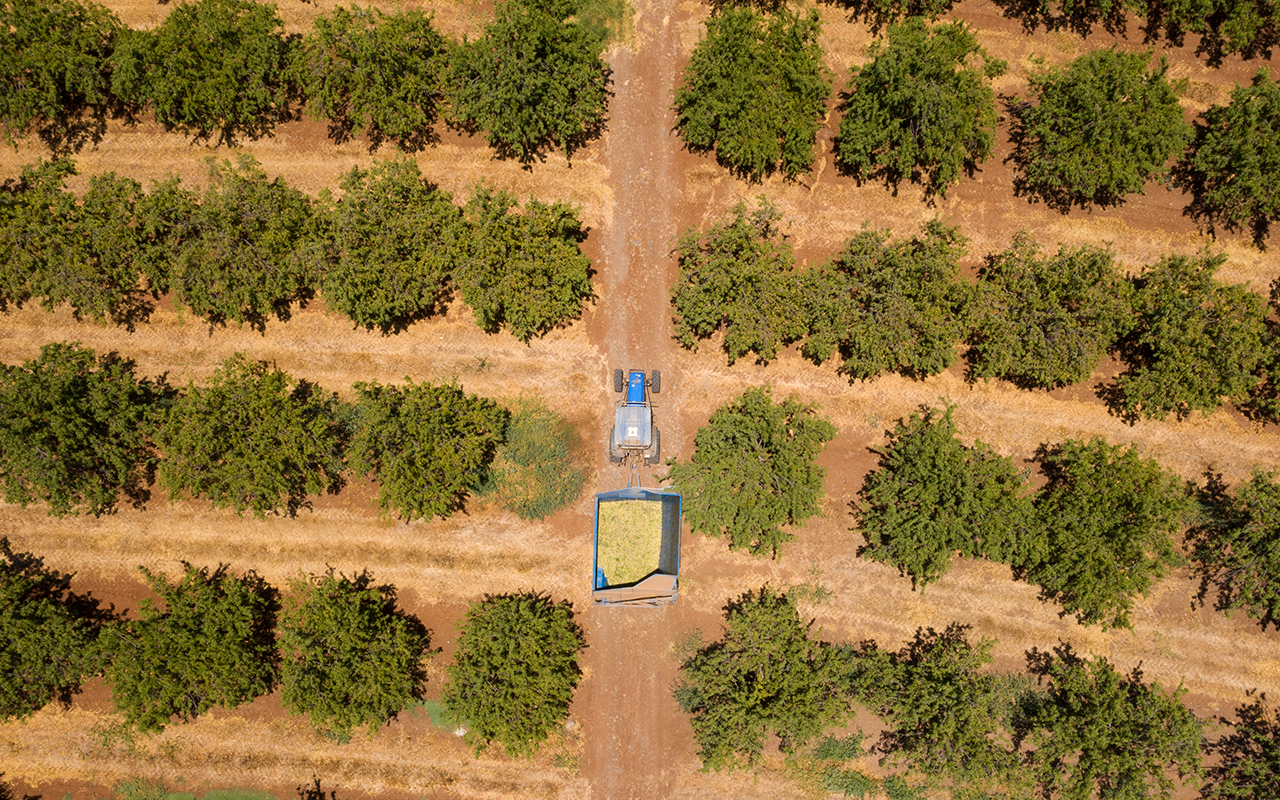Earlier this summer, USDA’s National Agricultural Statistics Service released an objective estimate for the 2025-26 almond crop year. This report called for a crop size of 3 billion pounds, which was significantly higher than its subjective estimate of 2.8 million pounds.
When the objective estimate released, it caused a price reduction of about 50 cents a pound that took about nine weeks to recover, says David Magaña, a senior horticulture analyst for Rabobank.
Magaña says almond prices, though, have experienced fluctuations in the market in the past few months.
“We’ve seen the market shifting from a bearish sentiment in early summer, to a bullish rally in late August and now in September,” he says.
NASS complies its subjective report released in May by surveying growers and its objective report in July to calculate what the estimated yield for the year might be.
And for the 2024-25 growing season, NASS’s subjective report called for around 3 billion pounds, but the objective report came in with a more conservative 2.8 billion pounds.
“We saw a significant recovery in almond prices within the 2024-25 marketing season,” he says.
But the opposite happened for the 2025-26 crop year.
“After they released that objective estimate in July, prices significantly moved downward by 50 cents or 60 cents per pound, but since then, we’ve seen prices recovering.” Magaña says prices recovered as harvest began a few weeks ago, and it looks as though this year’s crop will fall below the objective estimate. But prices have reached closer to multi-year highs.
“I think that the objective report took most of the people by surprise, because we had some challenges in pollination in some areas,” he says. “So, the nutset was good, but not as good to get a 3-billion-pound type of crop.”
Magaña says the market likely overreacted following the release of the objective almond crop numbers, but almond prices have returned to a number closer to before the NASS released the report.
One other thing that likely contributed to higher prices was the carry-in number from the 2024-25 crop. This is the amount of the previous season’s harvest carrying over to the next season’s crop. Magaña says the carry-in from the 2024-25 season was at a multiyear low for inventories, which helped keep prices steady. But slow shipments in May, June and July caused a higher carry-in for the start of this season.
He says a few things have also helped almond prices: steady demand for almond exports, especially in the European Union, and the movement of the dollar on foreign currency.
“The U.S. dollar has been depreciating since the beginning of the year … close to 10% depreciation of the U.S. dollar, depending on what currency you’re looking at,” he says. “So that definitely is improving the competitiveness of U.S. almonds in the international market.”
Official numbers for the 2025-26 crop season will come later, but Magaña says things look stable in the meantime.
“From the demand side it is looking mostly favorable, given that tariffs are going to be on hold in some critical markets, like the EU and with the exchange rate movements that we’ve seen over the past few months, that will help with the demand,” he says. “At this point, prices are back to the levels that they were before the publication of this objective estimate.”

















